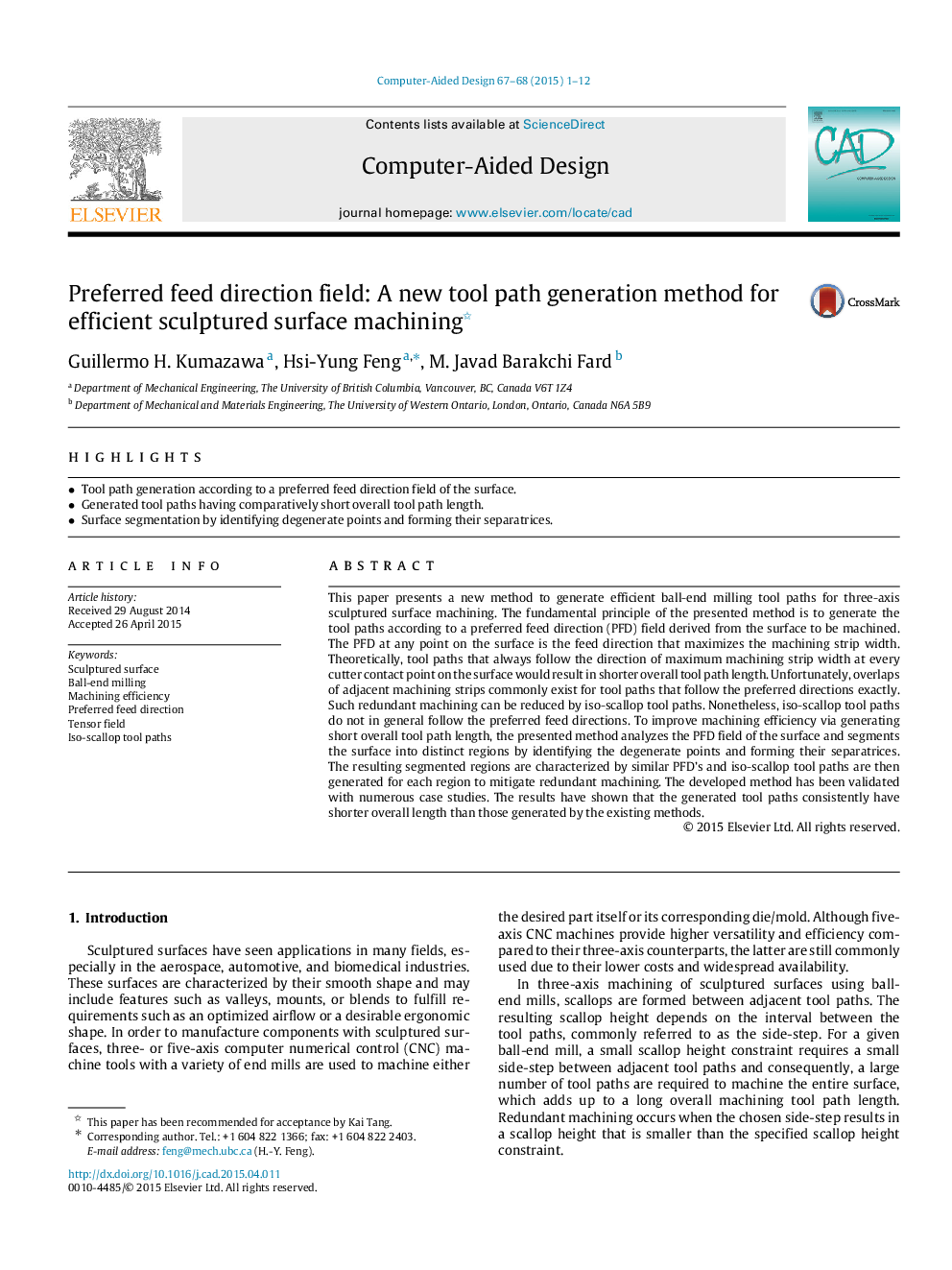| کد مقاله | کد نشریه | سال انتشار | مقاله انگلیسی | نسخه تمام متن |
|---|---|---|---|---|
| 440017 | 690940 | 2015 | 12 صفحه PDF | دانلود رایگان |
• Tool path generation according to a preferred feed direction field of the surface.
• Generated tool paths having comparatively short overall tool path length.
• Surface segmentation by identifying degenerate points and forming their separatrices.
This paper presents a new method to generate efficient ball-end milling tool paths for three-axis sculptured surface machining. The fundamental principle of the presented method is to generate the tool paths according to a preferred feed direction (PFD) field derived from the surface to be machined. The PFD at any point on the surface is the feed direction that maximizes the machining strip width. Theoretically, tool paths that always follow the direction of maximum machining strip width at every cutter contact point on the surface would result in shorter overall tool path length. Unfortunately, overlaps of adjacent machining strips commonly exist for tool paths that follow the preferred directions exactly. Such redundant machining can be reduced by iso-scallop tool paths. Nonetheless, iso-scallop tool paths do not in general follow the preferred feed directions. To improve machining efficiency via generating short overall tool path length, the presented method analyzes the PFD field of the surface and segments the surface into distinct regions by identifying the degenerate points and forming their separatrices. The resulting segmented regions are characterized by similar PFD’s and iso-scallop tool paths are then generated for each region to mitigate redundant machining. The developed method has been validated with numerous case studies. The results have shown that the generated tool paths consistently have shorter overall length than those generated by the existing methods.
Journal: Computer-Aided Design - Volumes 67–68, October 2015, Pages 1–12
